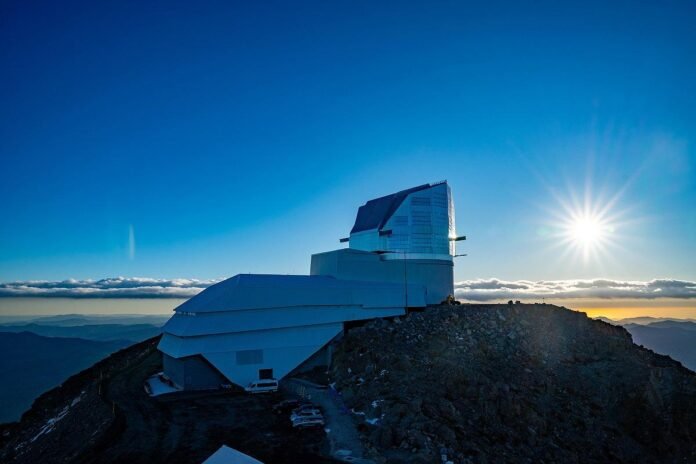The Vera C. Rubin Observatory is seen during sunset in the Coquimbo region, Chile, on May 17.
12:14 JST, June 28, 2024
SANTIAGO (Reuters) – With a resolution of more than 3.2 gigapixels, a weight of almost three tonnes and the ambitious task of carrying out an unprecedented decade of exploration, the largest digital camera ever built for optical astronomy is ready to be installed under the clear skies of northern Chile.
The pieces needed to assemble the Vera C. Rubin Observatory – which includes a ground-based telescope and camera – traveled in several vehicles to the summit of Cerro Pachon in the Coquimbo region, on the edge of the Atacama desert, about 565 kilometers north. from Santiago.
“Everything we needed for operations [is] “Now up on top and ready for checkout and hopefully installation a little later this year,” said Stuartt Corder, chief science officer at the AURA Association of Universities and deputy director of the NOIRLAb centre, which will operate the observatory.
According to the website, the Rubin Observatory is a complex, integrated system consisting of an eight-meter wide-field ground-based telescope, the camera and an automated data processing system.
About 20 terabytes of data are generated per night and its decade-long exploration will produce a 15-petabyte catalog database.
The aim of the research is to understand the nature of dark energy and dark matter in the universe – only a small fraction of which is known – and to study the possibility of Earth colliding with asteroids, or stars and planets close to the sun.
“That is a very inspiring moment when you can say: we are starting. We stand here at the precipice, preparing to launch a campaign that, we hope, ten years from now will answer the questions of… when the universe was created and set into motion… and how will it unfold in the continue to develop the future?”
The results may not differ from what we already know, but they will help refine our understanding of the universe, Corder said.
AURA is a consortium of 47 U.S. institutions and three international affiliates that operate astronomical observatories for the National Science Foundation and NASA. It is responsible for, among other things, the NOIRLab center.
Chile is home to much of the world’s investment in astronomy thanks to the clear skies of the Atacama Desert, the driest desert on Earth.



